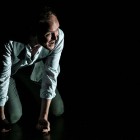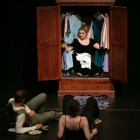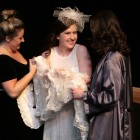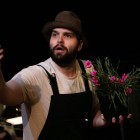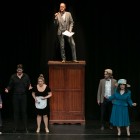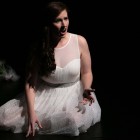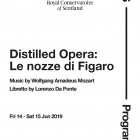Nozze di Figaro 2019Royal Conservatoire of Scotland
Read more about the opera Marriage of Figaro
Mozart forms an indispensable source of training opportunities for all students who go through any opera course at the various music schools. There may be a slight disadvantage as it is inevitable that singers and audiences will be tempted to make comparisons with the efforts of well-known mature performers, on record, in the theatre, and increasingly on video. This is, of course, unfair on the students. However the enormous benefits in technique, singing and acting, make it desirable that all students have an opportunity to experience these great works from the inside.
The last time the Conservatoire mounted a staging of Figaro was in 2015. As regards production, that was itself a bargain basement kind of effort, with modern costumes and skeletal sets. But the students were still obliged to meet all the vocal and dramatic challenges head on. Few of the present crop of students could have had any awareness of that staging. It was therefore an excellent idea for this very economical production to be worked on. There were only two performances, in the studio theatre - it is hard to imagine a full staging of Figaro not filling the New Athenaeum - never mind.
The whole enterprize was billed as 'Distilled Opera'. In other words the intention was to cut the work to the bone, leaving out inessentials. Without an orchestra, two accompanists played (Laura Heikkila and José Javier Icendo Malo), one on piano the other on harpsichord, and there was no chorus. It was 'semi-staged'. Sets were non-existent, just a few props, and costumes were off the peg. The Director was Julia Hollander, Musical Director Duncan Williams, Lighting Designer Kevin Robertson and Stage Manager Chariya Glasse-Davies.
Apparently the creative company had found there wasn't a lot of the work that could be omitted without destroying the structure. This is something that most people working on the piece over the years have discovered previously. All reports agree that the production and performances were fine, making it disappointing that the OperaScotland reviewer was unable to attend on either evening.
The Herald reviewer (Keith Bruce) was most complimentary: 'Conversely, they showed how little is needed in the way of props and furnishings to make it work, with all the farcical arrivals and hiding in the chamber of the Countess in Act One achieved using one smallish armchair. Hollander should be complimented on consistently inventive blocking of the scenes, her 10-strong cast using the whole auditorium with panache, as well as every inch of the stage.' He was unwilling to single out individuals as the ensemble performance was so accomplished.
Performance Cast
- Figaro the Count's valet
- Susanna the Countess's maid
- Bartolo a doctor, the Countess's former guardian
- Marcellina Bartolo's housekeeper
- Cherubino the Count's page
- Count Almaviva a Spanish grandee
- Don Basilio a singing teacher
- Countess Almaviva
- Antonio a gardener, Susanna's uncle
- Don Curzio a lawyer
- Barbarina daugher of Antonio
